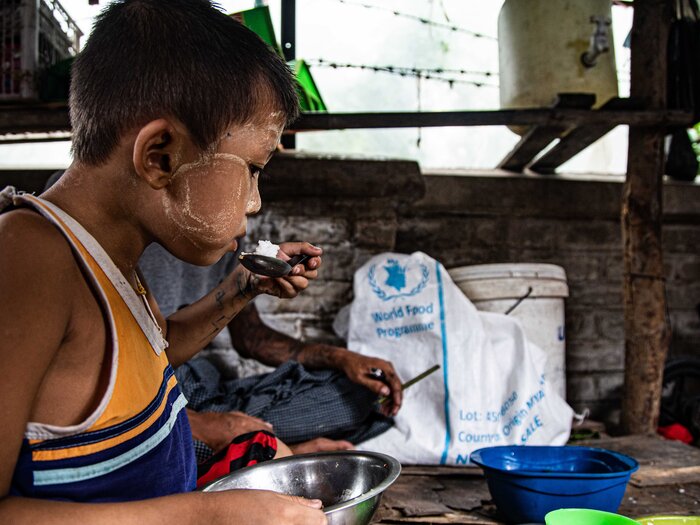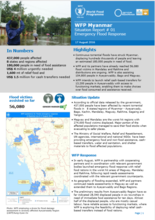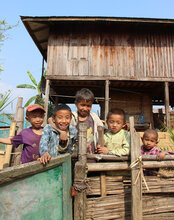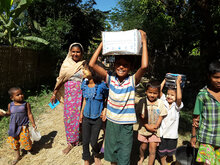Emergency
Myanmar emergency
- 14.4 million
- people in need of humanitarian assistance
- 13.2 million
- food-insecure people
- US$48.3 million
- WFP's funding requirement by September 2022
Hunger and the need for humanitarian assistance has grown even more complex and severe across Myanmar, with the triple impact of pre-existing poverty, COVID-19 and the current political crisis. More than two years on from the military takeover, the economy is spiralling downwards, leaving millions of people struggling to find viable livelihoods, basic services and, increasingly, facing challenges to meet their basic food needs.
Food insecurity is rising, with conflict, increasing commodity prices, access and movement restrictions all playing a part. WFP’s market monitoring continues to highlight higher-than-average prices for key food commodities. Fuel prices are also 133 percent higher post-crisis, and the average retail price of a basic food basket in February 2022 was up by 27 percent compared to a year ago.
What the World Food Programme is doing to respond to the Myanmar emergency
-
Food and nutrition assistance
-
WFP provides live-saving food and nutrition assistance to conflict-affected people and other vulnerable families who are particularly hard-hit by food insecurity in the country. In 2021, WFP has substantially expanded its life saving assistance, reaching nearly 3 million people with food and nutrition assistance, including 56,000 IDPs in areas of conflict and 1.7 million people in urban areas.
-
COVID-19 response and Common Services
-
WFP’s COVID-19 response included providing nutritious meals at quarantine and treatment centres, and providing meals for returning migrant workers across the country. WFP also adjusted its operations to safeguard the people we serve, as well as our staff, by minimizing the risk of transmission. WFP is providing a humanitarian air service connecting Yangon and Kuala Lumpur, with a stop in Laos. The flight allows humanitarian workers and diplomats to travel to and from the country. The flights operate every two weeks and will continue as long as international commercial flights remain suspended. So far, WFP has facilitated 61 flights for 1,700 frontline workers from 194 organizations.




